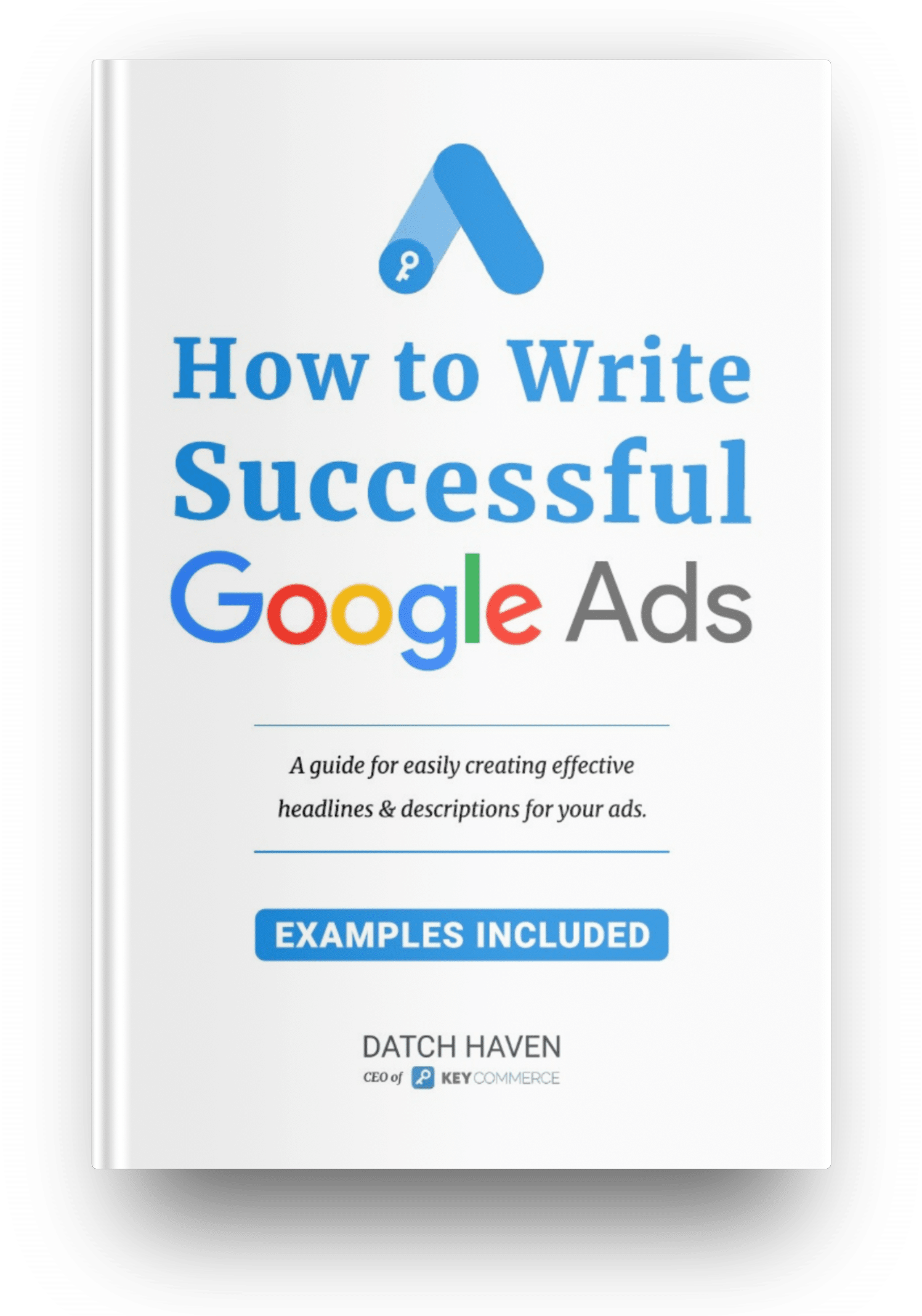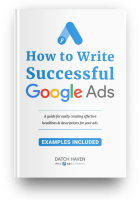If you’ve been following my Google Ads Audit playlist on my YouTube channel, you know how much I express the importance of performing a PPC audit as part of improving your business. It’s one way of achieving growth by adopting better strategies and tactics to optimize your Google ads campaigns.
A Google Ads audit will point up those areas in need of tweaking or adjustment and will also show you that some of your strategies are working well and should be either continued or even emphasized. When you conduct an Ad account audit, you'll be able to identify which ad campaigns are actually resonating with your target audience, and which are not. If you have this kind of information, you can easily revise and improve your tactics and strategy so that you can achieve greater success in the future.
About the Eyewear Ecommerce Store
The name of the store or brand will not be disclosed in this article to respect the owner’s privacy, but what I can tell you is that it’s a sunglasses and snow goggles brand in Australia. They had some nice foundations set up in their Google Ads account, but this PPC audit allowed us to see areas in the campaign and ad group level that needed some love and tweaking. I also recommended a lot of changes that will significantly scale up their campaigns, and I suggest you take note of these recommendations because you might just need it for your own Ecommerce store.
Continue reading to learn about agency-level strategies and recommendations to optimize your Google Ads campaigns to success.
Real Strategies and Recommendations from a PPC Expert
Disable Search & Display Networks for the Search Campaign
This is one of the first settings I check when performing an AdWords account audit. And I always recommend that you turn the Search & Display Networks off. Why?
Well, with all your networks disabled, you'll have a clearer idea of how your ads are performing with just your existing Google customers. Since all the Google partners and platforms will then be excluded from your ads, you will have full control over where your ads are placed, whereas you would have no control on where the search partners place your ads.
You also want to focus your Google ads budget on just Google or Google Shopping and not divide it to other platforms which you think will not produce quality traffic to your store.
Check Network performance by clicking “Segment - Network”
By choosing Segment-Network for your Network Performance, you will have a better idea on how well your network is performing, and that's another of the areas which needs to be checked during your Google Ads audit.
Change location targeting settings from “interested in” to “actually in”
Another Google ads setting you need to look into is your location targeting setting. If you’ve set it to “interested in” then that means that the people who are interested in your products, but are outside the location you’re targeting, will still see your ads. For example, if you’re targeting buyers in Australia and set the location targeting to “interested in,” people in the UK and US will also see your ads.
So I always recommend changing it to “actually in” so only people living in your target location will see your ads. That means your potential customers will be more legitimate and more likely to purchase.
Change bidding strategy. Don’t use “Maximize Clicks”
If you’re running fresh campaigns, the Maximize Clicks bidding strategy is not the best strategy to use. Why? Because this strategy will drive as many clicks as possible to your site, but they won't necessarily be quality leads. This means you'll have an inflated picture of the number of leads who are out there.
For new campaigns, I always recommend setting your bidding strategy to “Manual CPC bidding.” This will give you more control over your budget and ad spend and will help Google get more data from your campaigns. Once you have enough data, you can adjust your bids depending on how profitable your ads are.
Learn more about the best Google Shopping bidding strategy here.
Change Ad Rotation to “Do not Optimize”
This setting allows you to rotate your ads evenly, so as to hit every search auction. You'll also be able to manage this setting at both the ad group level and the campaign level.
Use SKAGS method to organize campaigns
SKAGS or Single Keyword Ad Groups are much more focused and granular than using an approach where you include multiple keywords. It's also much easier to associate results with specific keywords when using SKAGS.
Adjust bidding based on profitability of keywords
This is really just good business practice, because you're aligning your bid strategy with the returns you get from your keywords. Remember that this is best done when you’ve set your bidding strategy to Manual CPC bidding.
Add negative keywords to your campaigns
It makes sense to include Google Shopping negative keywords to avoid showing your ads to irrelevant searches and “eliminate” individuals who are not good candidates for making a purchase. Remember, each click is important and you don’t want to waste your Google ads budget on clicks that will not bring in a quality lead and conversion.
Bid directly on high-performing keywords
One component of your Google shopping bidding strategy should be to use those keywords which have proven to be good performers, and directly bid on them. There are so many ways to find these high-performing keywords, and a few of my expert-level tips is to:
- Use keyword research tools like Google Keyword Planner and SemRush.
- Spy on competitors. Know what keywords they’re targeting so you know how you’ll be able to compete. Knowing the keywords used by your competitors will allow you to see gaps in their keyword strategy. You can then take advantage of these gaps and use it to your advantage.
- Look at your search terms report. This report will show you new keywords that you didn’t know are being used by your target customers when searching for your product.
Create a Brand Campaign and bid on your own brand
Google Ads brand campaigns are campaigns that show up in Google Search when someone searches for your brand. For example, when someone searches for “Key Commerce,” our ads are going to show up and when users click on it, they will be directed to our homepage.
If you don’t want your competitors to steal your customers, you should start running brand campaigns in your Google Ads. Because if they see that your store is attracting a lot of customers, they’ll start running their own “competitor campaign” and entice customers to go to their store instead of yours.
But you can avoid this if you bid on your own brand and create compelling ads. By creating Google Ads brand campaigns, you’ll most likely rank first in Google, so make sure that you do get that click and keep those customers.
Create separate campaigns for high-performing and high-intent keywords
I always recommend grouping keywords into certain ad groups. For example, high-performing and high-intent keywords can be grouped together and broader keywords will be in another. This is a very great practice because it allows you to allocate your budget accordingly, i.e higher budget for the ad group with high-performing keywords, and lower bids for the ad group with the broader or discovery keywords.
Review quality scores
Quality score is Google’s way of grading your ads, specifically your keywords. And higher keyword grades means a higher quality score. If you get a higher quality score, then Google will give you the clicks for your keywords at a lower cost than what your competitors are paying.
There are four metrics which provide these kinds of insights.
Review ad copy – Make sure you're not guilty of keyword stuffing, of omitting a call-to-action, and certainly not forgetting your customer's needs and wants. All these will be critical in helping you achieve your own goals, so make sure your ad copy is just right.
Turn off Google’s auto-applied suggestions – If you fail to do this, you might well have some completely irrelevant ads created in your ad groups. And you could have niche products appearing in general ad groups, and vice versa.
Refine audience targeting – In order to maximize your ad spend, make sure that your audience consists only of those individuals most likely to make a purchase. Including anyone else will simply be a waste of your ad resources and an expense you don't need.
Give your account some TLC (Tender Loving Care) – Don't ignore your account for long periods of time. Come back and check on it periodically after your Google Ads audit, so you can identify any new trends in your account.
Conclusion
Unless you know which areas of your business are performing well and which areas are not, you'll never know which strategies should be improved and which should be curtailed. When you lack that kind of information, it's a lot like shooting at a target in the dark—you'll never know whether you hit or miss.
That's one of the biggest reasons why it's important for you to conduct an Ecommerce Google Ads audit and to build your own PPC audit checklist. This will guide you in knowing the health of your Google AdWords account and having a clear picture of the overall performance of your campaigns.
By regularly performing an ad account audit, you’ll be able to identify any strategies which might need to be revised, and to make even greater use of those which are already successful.












